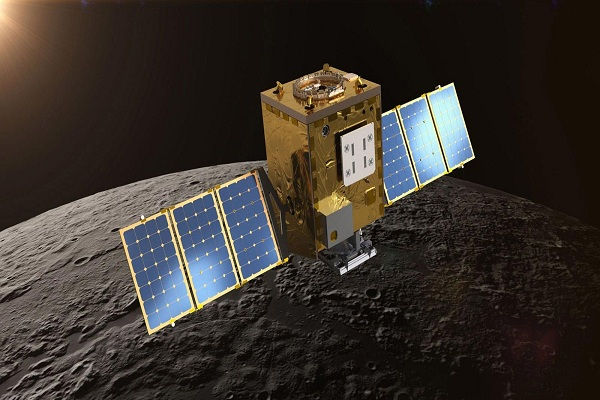NASA’s Lunar Trailblazers to Map the Lunar Surface
- jacksonhenry297
- Dec 16, 2020
- 3 min read
The new Lunar Trailblazer program is almost in its final stage. This space program for NASA will launch a constellation of small satellites to measure, assess, and analyze the lunar surface and its geology. Under the Caltech University, NASA is developing this project. Caltech University has got approval from NASA to complete the hardware installation stage. Lunar Trailblazer will back and act like the support system for NASA’s Artemis mission. One of the primary objectives of this mission is to find water in the Moon and accordingly map its surface.

About Lunar Trailblazer Program
Lunar Trailblazer works under the flagship of NASA’s Small Innovative Missions for Planetary Exploration (SIMPLEx) program. This project is the second mission to receive a confirmation and plans to deliver its flight system in October 2022 for the Artemis program. The Lunar Trailblazer will detect ice through the reflected light. As a result, it will pinpoint micro-cold trap locations. These locations are less than the size of the football fields. The constellation of satellites will collect and accumulate measurements at multiple times of day over sunlit regions.
How will Lunar Trailblazer measure water?
Trailblazer will try to determine the form of water, along with the volume of its presence, and its distribution on the Moon’s sunlit side. Once the satellite obtains the data, it will establish a correlation between localized water enhancements with silicic domes and pyroclastic glasses. The norites and anorthosites on the Moon would suggest the form of water is endogenic or not. Hence, it will provide a global assessment of those magmatic reservoirs enriched in water. Also, it will assess whether water presence is in correlation with other incompatible elements. Due to this, many more and new information would come out regarding the thermal evolution of the Moon.
Other Objectives
Apart from detecting water, Lunar Trailblazer has two more vital objectives to serve with the program. Firstly, the Lunar Trailblazer’s high-resolution temperature data will help determine and detect water cycles’ function on airless bodies. The program then seeks to characterize modern temporal variability and find any possible correlation between mineralogy and soil maturity.
Trailblazer’s Enriched Equipment
Lunar Trailblazer has a HVM3 ((High-resolution Volatiles and Minerals Moon Mapper) instrument that uses a shortwave infrared (SWIR) imaging spectrometer. This device has a spatial resolution of 70 m/pixel over a 20 km swath width. Also, it has a spectral resolution of 10 nm over a spectral range of 0.6 to 3.6 µm. The HVM3 equipment optimizes the detection of volatiles to map OH (chemical formula of hydroxide), bound H2O (chemical formula of water), and water ice. Apart from this, this program has Oxford University’s developed lunar thermal mapper (LTM). This mapper is a pushbroom multichannel imaging thermal radiometer that a spatial resolution of 25 m/pixel over an 11 km swath width, operating in four broad bands between 6 and 100 µm and a total of eleven bands between 7 and 10 µm. LTM also does the thermal mapping of the temperature in a range of 110-400 K. As a result, it can assess the physical properties and composition of water-bearing areas in HVM3 pixels.
Lunar Trailblazer’s Communication System
One of the significant problems in detecting water is sending and getting signals on the Moon’s polar side. The polar side of the Moon has never received the light of the sun. Due to tidal lock with Earth, one can never see this far-side. Lunar Trailblazer will have an S-band radio (2-4 GHz) for communication relay support to lunar landers (up to 5 Mbps). It will also upgrade its X-band link to Earth to 5-8 Mbps (from the current 256 kbps). As a result, it will enhance the relay capability and let Lunar Trailblazer speed its journey by seventy times the original speed.
Conclusion
With the Lunar Trailblazer project completion in its final stage, one can expect its launch in 2021. The program needs a reasonable amount of time to complete the objectives before the third phase of the Artemis program that will carry the crew to the Moon. Hence, it will provide an enhanced assessment of the lunar object. The study of water and its mapping with geology will give a brief idea of the Moon and push humanity to understand the universe’s evolution after the big bang.



Comments